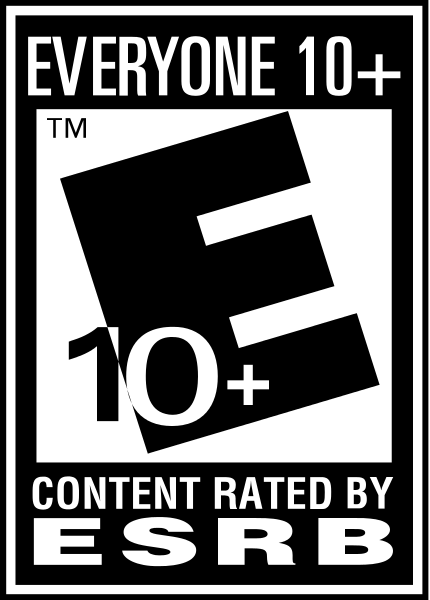Existing User Log In
New User Registration
Register for a free account to gain full access to the VGChartz Network and join our thriving community.





America - Front


America - Back


Maxis
Strategy
 09/07/08 Electronic Arts
09/07/08 Electronic Arts  (Add Date)
(Add Date) 09/05/08 Electronic Arts
09/05/08 Electronic Arts
| Owners: | 159 | |
| Favorite: | 1 | |
| Tracked: | 1 | |
| Wishlist: | 1 | |
| Now Playing: | 4 | |
24th Sep 2020 | 3,040 views
Game: Spore.
Platform: PC.
Year: 2008.
Developer: Maxis
Genre: Simulation.

Exploration in videogames has been a concept that has evolved a lot throughout the years. Like many other ideas, technological development has been a key factor for its evolution, but it has never been wholly dependent of it. You can find great examples of exploration in older games, from small secrets hidden in the levels to alternative routes that would allow you to find completely new stages. Even the earliest RPGs would aspire to create vibrant and interesting worlds through adventuring, filling the world with enough to make you explore outside the main storylines as much as possible. However, putting exploration as the main focus of the game is another thing entirely, since the requirement for a constant supply of new things to see and do is extremely taxing for developers. Exploration demands encountering enough to keep the player engaged and curious the whole way through, and to do it at a decent pace. And that means a lot of content. You could just keep making level after level, quest after quest, secret after secret… but at some point you have to release the game, not to mention the expenses needed for that kind of project are considerable. That’s when the concept of procedural generation appears. Suddenly you can theoretically create a near infinite amount of content, all practically unique from player to player. No single playthrough would be the same, each game a completely singular journey. While in reality it can still create wondrous worlds if done correctly, this can only work well when applied in moderation, and when it has a well-developed structure underneath to keep the fundaments from crumbling. Some of the most famous cases of great procedural generation usually tend to fail on the latter, and one of the best examples of that is Spore.
Spore is a life simulator/god game/space exploration made by Maxis Interactive and published by Electronic Arts in 2008 for the PC. The game attempts to cover a simulation of the evolution of life, from unicellular beings to the exploration of space. The game tries to expand its scope as much as possible, having all sorts of elements for each of its phases, plus a small online element. It can be difficult to describe what exactly Spore is, since it tries so many things at once. It certainly got a big push from its publisher, since it got quite a lot of spinoffs after its launch, though it quickly ended up out of the limelight.
Before I start this review, a bit of warning. This game has a couple of expansions: Spore Galactic Adventures, Spore Creepy & Cute Parts Pack and Spore Bot Parts Pack. I will only include in this review the Galactic Adventures expansion, since I don’t have played the other two, and from what I’ve searched, they are just content packs that include more bits for the creation modes (and apparently the Spore Bot Parts is seemingly region locked to the US due to a tie in promotion with Dr. Pepper. Huh).
It is difficult not to be impressed by the scope of this game, especially considering this was done in 2008. The game’s objective is being a simulation of life itself, and it divides its gameplay in five stages: the cellular stage, the creature stage, the tribal stage, the city stage and the space stage. All of them have a very important emphasis on both imagination and exploration. You will have access to different editors and character/building creators throughout the whole game, each one focusing on the previously mentioned stages. They are quite extensive, though the point limitations in some of them can stifle the creative process a bit. Each of the stages works on a different scale and with different mechanics and objectives, all while being connected with each other. The benefits you get in one stage can carry over to the next, making you strategize and think of what exactly do you want to do in the next stage, and what do you have to do in order to get as many bonuses for that as possible. However, one of the problems that is apparent with the first playthrough is the difference in depth between the stages. Simply put, not all stages are created equal, and it’s very obvious from the very beginning that some received much more attention and development time than others.
The cell stage starts with a beautiful cinematic of a meteorite carrying life in form of unicellular organism crashes into the seas of a planet, starting in the primordial soup at the depths of the ocean. After that, you create your organism with the limited tools and bits you have at that point, and you start the game. You take control of that organism, choose what kind of diet it will have, which shape and a couple of other features. The objective? Survive, feed yourself and keep growing until you advance to the next stage. The stage is extremely simplistic, though I have to assume this was intentional, as it is the most basic of them all. As long as you feed yourself and keep potential predators away, you will gather experience fast. That experience can be used to add more features to your creature, which is something you want to do, as a featureless creature will be easy prey. In my experience the most interesting form of play is as a carnivore, since herbivore basically boils down to staying around algae and eating them until there’s no more. As a carnivore you have to hunt other creatures, chasing them down, attacking other predators, countering their defenses… it’s much more dynamic than just laying down eating green, though an omnivore option is always recommended, as you will be able to recover health from algae as well. You can discover many extra bits by defeating other creatures, usable on the creature editor to improve your organism. As you grow bigger and bigger, the gigantic organisms you saw in the background won’t be as big, and you’ll be able to interact with them, which is a nice touch. And that’s pretty much it. It feels like a small FTP mobile or browser game. If you’ve ever played Agar.Io, it’s something similar. It’s not bad, but it can become boring fast. However, this mode is quite short, so it at least allows you to move on before you start to feel grated.
Once you beat that mode, you go to the creature mode. This is when your creation exits the oceans and tries to conquer dry land. The objectives are seemingly the same: keep your creation fed, protect it from predators, gain enough experience to add body parts to it… However, this time you have a wider array of tools and mechanics to work with. Your offensive arsenal increases tenfold, and you will have to think about strategy to take down certain species. You can also develop diplomacy towards other creatures in the form of primitive dances and songs, filling a charisma gauge that, once successful, allows you to create a small party of animals to work for you. There are many options for feeding, though once again the carnivore side is the more interesting one, having the most options available (raiding unguarded nests, attacking the young of other species, strategizing to take down huge packs at once…). The playing field is also much more complex, since instead of the 2D space you had in the previous stage, you have now a 3D world to travel around, and the movement options increase to reflect that: you can jump, fly, run, charge… The ability to form packs is also a very nice addition, since large groups will offer you a better protection for attack and defense. The scope of the mode has expanded quite a lot, however there is still the lingering feeling that they could have done a lot more with this mode. For starters, the game mechanics are quite repetitive, and unlike the previous mode, it’s not over in a moment. This needs more exploration and interaction with other species around you, and while that seems fun at first, you are pretty much doing the exact same thing over and over, even if you try the more diplomatic routes. Hell, the game wants you to try and befriend other species, but why would you do that when your own species is befriendable, and benefits from all the upgrades you have. The exploration becomes even more tedious if you try to discover all of the evolution bits around the map, something you really want since the benefits of certain parts can be quite considerable, even in other stages. However, trying to complete it is quite a hustle, since they are scattered at random in the form of fossils and as war trophies. And unlike the cell stage, there are dozens, if not hundreds of bits to find, and the hunt for them is not engaging enough.
The tribal stage is quite short and not particularly interesting. Your objective is more complex this time around: grow your tribe until it controls the entirety of the continent you’re on. Once again, simple and straightforward. However, this time around it changes the gameplay to be more RTS-like: top down perspective, control of multiple units, resource management… You will have to deal with other tribes, either by befriending them or by conquering them. Your resources are pretty much the same, you can hunt, gather and fish. I would have loved some sort of agricultural mode, but what can you do. You have the option to create tools to improve your strength in different areas, but outside a couple of them, they feel pretty pointless. Why bother fishing when you can hunt or gather easier and without spending points on tools? Why bother making anti-structure weapons when once you’ve killed all the enemy tribesmen you can take all the time in the world burning everything down? Hell, at many occasions you will use the abilities you gained in the creature stage more than the tools or the shaman powers. And that’s pretty much it. Compared to the previous stage, this one is quite shallow, and it is only there as a stop in the road to something better.
The city stage is slightly more complex than the tribal stage, but not by much. After you’ve conquered all of the tribes, your next step is to conquer all of the planet. Now the game focuses more on city management and resource controls, trying to absorb the other cities through either conquest, business or religious conversion. At this point, the game basically boils down to getting a city that can produce as much spice as possible while keeping its happiness, controlling spice geysers and slowly but surely taking over the other cities by land, air or sea. Out of all of the modes, this is in my opinion the one that feels it needed more time in the oven. You can do so much with this kind of gameplay, from complex politics to trade routes to city managing in detail, arms races, scientific development… It is pretty bare bones as is. The one thing I have to remark is that, if you play the more warmonger mode, you will eventually have the option of nuking your enemies. If you’ve played the game at least once, you know that’s a terrible idea, since you need as many cities as possible in the space stage, and planets can’t have more than 3 cities in them, so keeping your capital planet above that limit is a huge advantage in the early game. I’d be foolish to waste it.
So after all of that, you get to the final stage of the game: the space stage. And boy, this is the part where the game truly shines. Once you design your spaceship and leave the atmosphere, you are free to explore the entire galaxy. And I mean the entire galaxy. The procedural generation here basically means there are thousands of planets, and each of them will have its own geography, its own ecosystem (with unique plants and animals to boot), its own civilization if they’re inhabited… There are all kinds of planets and stellar formations, and while exploring you will find different treasures, explaining the surprisingly interesting backstory of the galaxy. The objectives in this stage are quite varied, mostly because the galaxy at this point is a massive open sandbox for you to do whatever you want. The one objective that ends up appearing after a while is reaching the center of the galaxy, guarded by the hyper-aggressive species the Grox, which have a massive empire in the galactic core. To reach the center in one piece, you’ll need to improve your ship by buying new technologies, which are available after completing certain criteria. And once you’ve unlocked them, you’ll need the spice needed to pay for the upgrades and tools. The way the economy is set up is pretty good too: every planet produces certain types of spice, and you can sell them, either to your own planets or to neighbor empires, which is usually the most profitable way to obtain money (they can buy spice for higher prices, selling them stuff improves your relationships with them, and their products are cheaper than buying stuff on your planets). So you’ll end up setting up as many colonies as possible, upgrading them as much as you can to increase the spice output, and then travel around to sell it. It’s a fun merchant mechanic, although it would have profited for having different kinds of sellable resources other than spice (treasures can be sold, but they are not nearly enough to keep the economy going), plus all the back and forth can be repetitive. Interacting with other species is also entertaining, and the game gives you enough incentive to leave them unconquered, unlike the tribal and city stage. You can’t just make more ships of your own (for some reason you only have the one), so you need to ally to get extra ships for your fleet. And of course, there’s the ability to terraform planets to your liking. While this is an extraordinarily expense at first (especially when far from your home planet), it ends up being worth it. First you have to adjust the atmosphere, then add layer upon layer of ecosystem to the world, and it’s incredibly satisfying to turn a frozen rock bereft of anything into a planet teeming of life. The downside of that is that most of your carrying space will be occupied by the different organisms needed to complete an ecosystem. There’s also the chance of seeing different species in the middle of their evolution while exploring the cosmos, and you can interact and enlighten them to advance to their space stage. Useful for making quick allies, and even more useful if you want to conquer an easy planet with high spice production (generally capital planets have more than the usual 3 cities). Overall, this is the stage that has the most content by a long shot, more than the other stages combined. When you hear someone’s playing Spore, this is the part they’re usually talking about. While this stage is the most complete of all, it sadly shares the feeling of needing more stuff to be more worthwhile, it could have been even better if a couple more things had been added, like more complex missions or more incentives to explore around beyond reaching the galactic core. The different emergencies on your planets are also distracting, since you’ll need to be constantly watching over them in case of pirates, Grox incursions or ecological disasters happen, thus keeping you around your empire so you can respond to them fast enough. The one thing that really annoys me is the reward you get for getting to the center of the galaxy. Without spoiling the game, while the prize itself is actually phenomenally valuable and fun to use, it has a limited amount of uses. Why? Why bother putting such a limitation after what amounts to beating the game? Why can’t I just run rampant with it? It’s not game breaking per se, but it’s a big miss opportunity.
The Spore Galactic Adventures expansion pack includes a special mode for the space stage. Essentially you send your captain to missions in person to different planets, giving you something that this game really needed, more story. And while it’s all fun and good, the problem with them is they are too linear. They tell you to go from point A to point B, talk to someone, give this to someone, defeat this monster… You have no way of going around the missions, you are railroaded from beginning to end. And that can make you play a couple of missions and ignore it altogether after that, since the original game was much more immersive. Also, flying tends to sequence break a lot of missions, since it ignores obstacle courses and potential ground dangers. It’s fine, but pretty forgettable.
And that’s the game. It really feels like four different games barely joined together (the tribal and city stage are too similar to each other). All of them suffer a lack of depth the game tries to compensate by the addition of the different modes. If they had dedicated more time developing each of the modes individually, and then make them so they can connect with each other, they would have had something wonderful in their hands. Maybe it would’ve been complicated to do at the time, especially considering it was 2008, but it would have been nice to see. The online part is also rather underwhelming, since it basically boils down to seeing other player’s creations. However, I can’t really complain too much, since for what they’re worth, all are generally decent enough. The space stage in particular is the crown jewel of this game, and it definitively would’ve been interesting to see this mode expanded upon more. It’s still really fun, though, and it has aged surprisingly well since the last time I’ve played it.
Score: 7/10
| Total Sales |
0.00m
Japan |
0.03m
NA |
1.06m
Europe |
0.07m
Others |
1.16m
Total |
| 1 | n/a | n/a | 104,110 | 104,110 | |
| 2 | n/a | n/a | 82,787 | 82,787 | |
| 3 | n/a | n/a | 50,136 | 50,136 | |
| 4 | n/a | n/a | 28,261 | 28,261 | |
| 5 | n/a | n/a | 17,977 | 17,977 | |
| 6 | n/a | n/a | 13,700 | 13,700 | |
| 7 | n/a | n/a | 9,621 | 9,621 | |
| 8 | n/a | n/a | 9,728 | 9,728 | |
| 9 | n/a | n/a | 11,993 | 11,993 | |
| 10 | n/a | n/a | 16,265 | 16,265 | |
|
|
dark_gh0st_b0y
posted 06/08/2011, 09:27
EA said sold 2m in 3 weeks, and i find it no hard to believe EA considering how popular and awesome Spore is Message | Report |
|
|
|
|
|
darthdevidem01
posted 11/05/2010, 11:08
Really boring, well The Sims 3 rules, you win some you lose some. Message | Report |
|
|
|
|
|
|
|
|
|